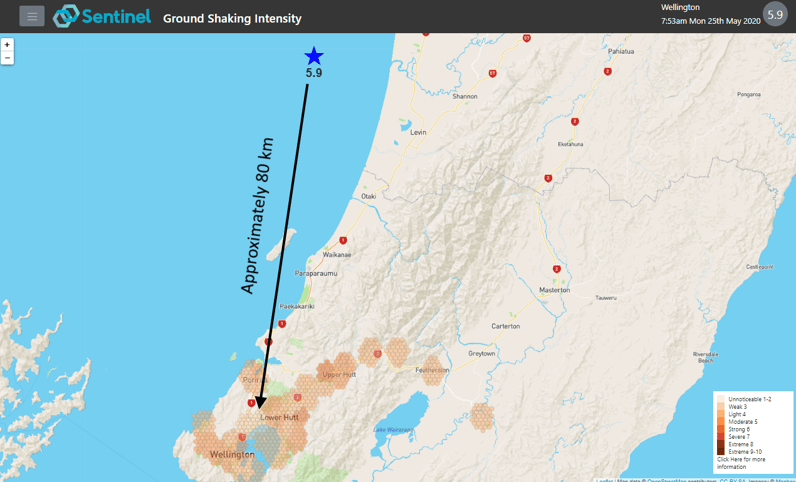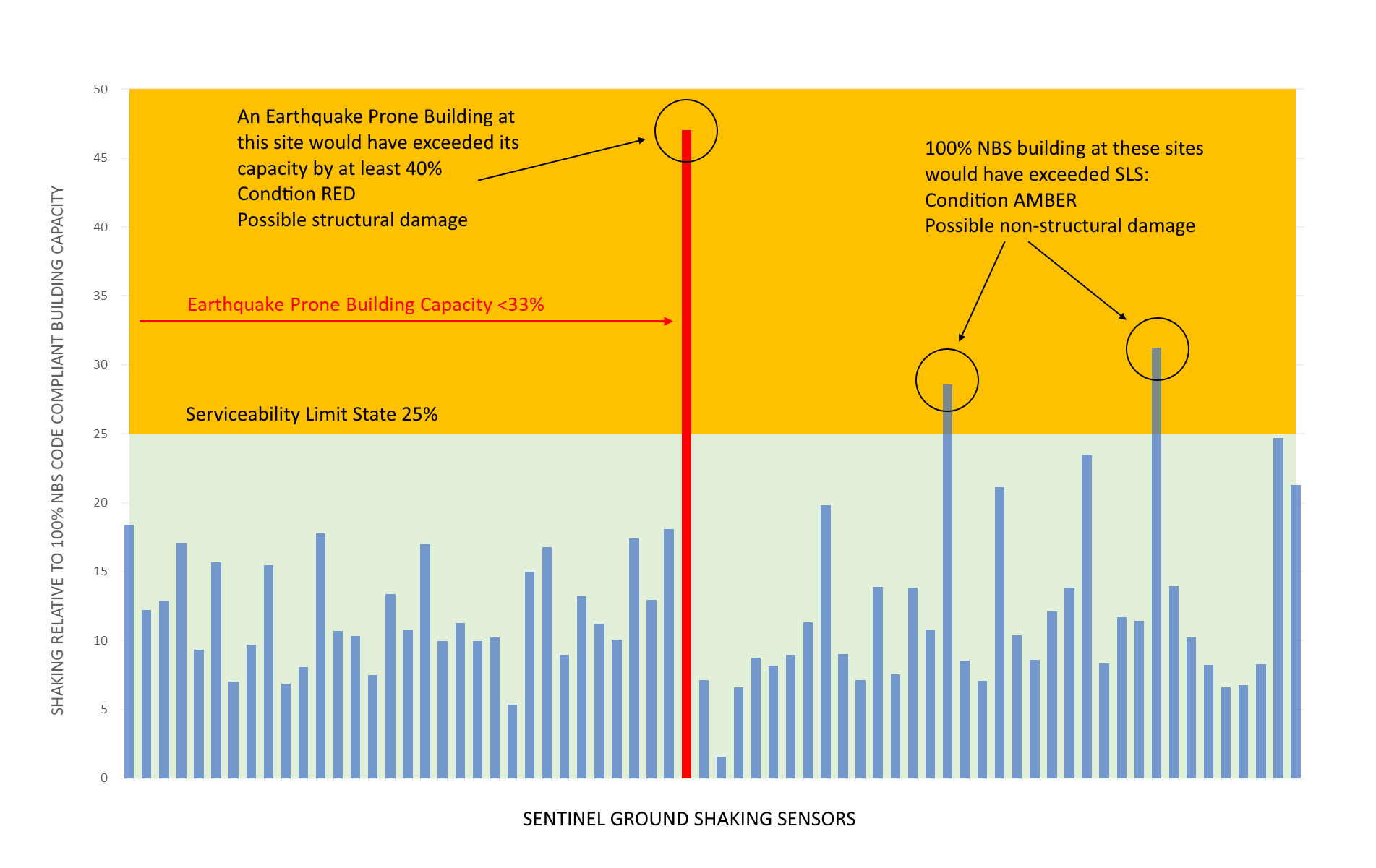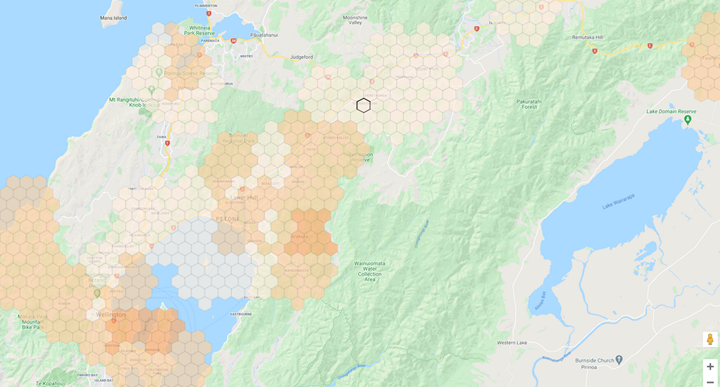When an earthquake strikes, the go-to resource for most New Zealanders is GeoNet. Following an event, people quickly jump onto the site to review the magnitude and the intensity of the quake or “reported shaking”.
At Sentinel, we know that measured ground shaking across a city or region is highly variable. Using “Magnitude plus distance” as a crude estimate of damage likelihood is unreliable, uncertain and potentially dangerous. An earthquake earlier this week provided a graphic demonstration.

The M5.9 quake was centred offshore from Levin and produced moderate-strong ground shaking across a wide area. Porirua, the Hutt Valley and Wellington are all approximately the same distance from the epicentre. Using the Magnitude + distance estimate, shaking should be more or less the same in all places, correct?
Sentinel shows otherwise. Taking data feeds from over 60 Sentinel sensors covering Porirua, the Hutt Valley and Wellington, we compared the ground shaking strength at each point to the design capacity of a modern 100% NBS building. The shaking variation is huge: a minimum of 2% at one site compared to a maximum of 47% at another site. Every sensor tells a different story, and every real building would be affected differently. Only by using Sentinel can a business owner, building owner or property manager understand the actual shaking at their building.

Three sites have exceeded the AMBER limit – this means that a 100% NBS building could have suffered cosmetic and other non-structural damage. An older, lower rated building at these sites would probably be worse affected. At one site, the shaking is strong enough that an Earthquake Prone Building of less than 33% NBS would have exceeded its rated capacity by some margin. This means that structural damage is possible.
Only actual ground shaking measurement at or very near your building provides reliable information. Do you know what the areas of highest shaking are? Do you have a building in one of these areas? Have you had it checked? Are you providing adequate protection and reassurance to your tenants and staff?
Sentinel users had this information within seconds of the end of the earthquake. Sentinel is the technology that ensures you make the right call following an event, equipping you with the information specific to your building when you really need it, in whatever format you need.
Sentinel is monitoring more than 150 buildings and keeping 100,000 people safe. Sentinel’s subscription service covers all of New Zealand. No installation. No maintenance. No building owner permission. No hassle. No up-front cost. No delay.
Are you responsible for your people’s safety and your organisation’s continuity? Then get in touch with us for a free demo to find out how Sentinel can provide the assurance you need.




SHARE